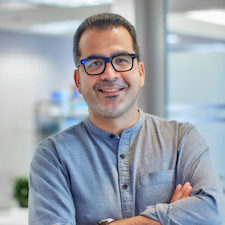
Research Director
SHARE
To think that the residents of eight poor communities in the heart of San Juan could hold the power to decide how a huge infrastructure and urban development project would be carried out—specifically, the dredging of a body of water and the restoration of surrounding areas—sounds as unlikely today as it did two decades ago. In a country where indigence rates demonstrate that socio-economic deprivation has been persistent and profound, and where the less fortunate are commonly described, falsely, as lazy, deadbeats and hustlers, it would be implausible that the poor could define and implement solutions to some of our most complex problems. Yet this is precisely what the residents of the eight communities bordering El Caño Martín Peña, organized under the Group of Eight Communities or G8, have achieved in collaboration with officials from the ENLACE Project, a public corporation that implements the vision and plans defined by El Caño’s neighbors.
Almost 20 years ago, just after finishing a master’s degree in urban planning, I joined El Caño’s network of collaborators to help advance a new comprehensive planning effort. It was a resident-led initiative that aimed to achieve environmental justice, spur spatial and socioeconomic development, and create the first community land trust to prevent the displacement of residents that usually accompanies the redevelopment of urban neighborhoods. At that time, there were quite a few who, without any reservations, said that this was just another fairy tale, a utopia destined to fail or a waste of time. Too many times, I heard friends and colleagues say that the money required to clean and deepen the body of water would never turn up, and that it would be best to evict existing residents so that the lands located in the heart of Hato Rey and Santurce could be used for more productive and lucrative purposes. Perhaps they were trying to provoke me—with the kind of jests that usually reveal repressed desires—knowing that I would wholeheartedly defend what was undoubtedly the best planning idea that had been articulated in a long time. Those taunts were on my mind, when a couple of months ago, I attended an activity at Parada 27 where the “first shovel” of the dredging was celebrated. After years of struggle, numerous popular education campaigns, and fierce lobbying, the hundreds of millions in federal funds were allocated to begin the most expensive and impactful infrastructure works. These projects, in addition to improving the lives of the more than 16,000 residents of the eight communities that border El Caño, will benefit the rest of the island because they will reduce the threat of flooding in the Isla Verde airport and improve the water quality of the San Juan Bay Estuary. For those of us who have been working hand in hand with the people of El Caño for years, it was a very special day to commemorate the achievement of what a few believed possible and others, inside and outside the government, underestimated or obstructed.
Weeks later, the Department of Housing announced a grant of $46 million awarded to ENLACE for the relocation of families currently living where the excavators will be dredging, and the construction of affordable housing on the firm and protected land of the Caño Martin Peña Land Trust. With these funds, many more households will join hundreds of others that, over the years, El Caño organizations have been able to move out of at-risk areas and into housing within the community or wherever the residents choose. Relocating households is an extremely delicate and complex task, especially in a country with a long tradition of moving the poor from one place to another, without their consent or respecting their rights, as if they were boulders blocking a road. Nevertheless, the people of El Caño have conceived a successful and proven model, anchored in dialogue, transparency, respect, and the participation of the families to be relocated, which should serve as an example to the troubled managers of the post-disaster programs that have barely begun being implemented throughout the country.
These two major achievements alone should impress us. But it is important to note that they are part of a broad portfolio of local initiatives that reveal the transformations that can be achieved when good planning and community participation processes are formulated. In El Caño, they have converted vacant lots into community gardens or agro-artisan markets. They are transforming buildings, including schools abandoned by the state, into community businesses and commercial spaces. Safe homes are being built and affordable multifamily housing projects are being designed. And most of the new housing will be located on the 200 acres that make up the Community Land Trust, ensuring that they will not be at the mercy of the real estate speculation that is contributing to our severe housing crisis.
Thanks to the usual tropical dismissiveness and cynicism, El Caño’s experience resonates more outside of Puerto Rico than in our archipelago. As a planning professor and academic, it fills me with pride when my colleagues from different parts of the world comment on the trajectory and achievements of the El Caño communities and their organizations. In addition to the numerous international awards they have received, and the many analyses, studies and essays that have been written, El Caño’s experience has been discussed as a model in Brazil, Spain, South Africa and in other communities facing similar problems in various parts of the world. Now many more here need to take note and understand that, El Caño is leading the way towards rethinking and truly rebuilding the country.
The Spanish version of this column was originally published in El Nuevo Día on July 2, 2023.
